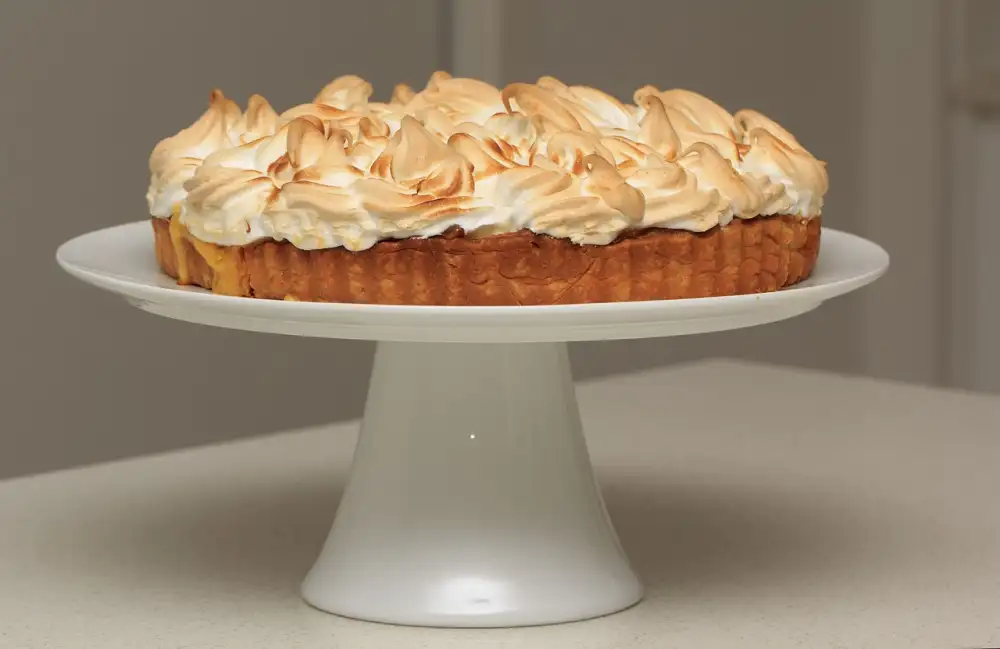Mastering the Art of Sweet Shortcrust Pastry: Elevate Your Desserts with this Irresistible Recipe

- History and Origins of Sweet Shortcrust Pastry
- Key Ingredients for Making Sweet Shortcrust Pastry
- Step-by-Step Guide to Making Sweet Shortcrust Pastry
- Tips and Tricks for Perfecting Sweet Shortcrust Pastry
- Popular Sweet Pie and Tart Recipes Using Sweet Shortcrust Pastry
- Variations and Creative Uses of Sweet Shortcrust Pastry
Sweet shortcrust pastry is a versatile and delicious base that elevates any dessert to new heights. With its buttery, crumbly texture and delicate sweetness, it adds a touch of magic to pies, tarts, and other sweet treats. Whether you're a seasoned baker or just starting out in the kitchen, mastering the art of sweet shortcrust pastry will open up a world of culinary possibilities. In this article, we will explore the history, key ingredients, step-by-step guide, tips and tricks, popular recipes, variations, and creative uses of this irresistible pastry. Get ready to embark on a journey of culinary enchantment as we delve into the artistry behind sweet shortcrust pastry.
History and Origins of Sweet Shortcrust Pastry
Sweet shortcrust pastry, also known as pâte sucrée in French, has a rich history that dates back to medieval times. Its origins can be traced to the Middle East, where it was first used as a base for sweet pastries and tarts. The concept of using butter or lard to create a tender and crumbly crust was introduced by European bakers during the Renaissance period. Over time, sweet shortcrust pastry gained popularity across Europe and became a staple in many traditional desserts. Today, this versatile pastry is loved for its delicate texture and ability to complement a wide range of sweet fillings.
Key Ingredients for Making Sweet Shortcrust Pastry
To create the perfect sweet shortcrust pastry, you'll need a handful of key ingredients. These ingredients work together to produce a delicate and buttery crust that will elevate your desserts to new heights.
1. Flour: Start with all-purpose flour or pastry flour for a lighter texture. The flour provides structure and stability to the pastry.
2. Butter: Use unsalted butter, cold from the fridge. The high fat content in butter gives the pastry its rich flavor and tender crumb.
3. Sugar: Granulated sugar adds sweetness to the pastry and helps with browning during baking. Adjust the amount based on your desired level of sweetness.
4. Salt: A pinch of salt enhances the overall flavor profile by balancing out the sweetness and adding depth.
5. Egg yolks: The egg yolks act as a binding agent, helping to hold the dough together while adding richness and tenderness.
6. Ice-cold water: Adding ice-cold water gradually helps bring the dough together without overworking it. It also ensures a flaky texture in the final result.
By using these key ingredients in precise measurements, you can achieve a sweet shortcrust pastry that is both tender and sturdy enough to hold any filling you desire. Experiment with different variations to find your perfect balance of flavors!
Step-by-Step Guide to Making Sweet Shortcrust Pastry
1. Start by gathering all the necessary ingredients: 250g of all-purpose flour, 125g of cold unsalted butter (cut into small cubes), 50g of powdered sugar, a pinch of salt, and 1 egg yolk.
2. In a large mixing bowl, combine the flour, powdered sugar, and salt. Mix well to ensure even distribution.
3. Add the cold butter cubes to the dry ingredients. Using your fingertips or a pastry cutter, gently rub the butter into the flour mixture until it resembles coarse breadcrumbs.
4. Create a well in the center of the mixture and add the egg yolk. Use a fork to lightly beat the egg yolk before gradually incorporating it into the dry ingredients.
5. Once the dough starts to come together, transfer it onto a clean surface and knead it gently until it forms a smooth ball. Be careful not to overwork the dough as this can result in a tough crust.
6. Flatten the dough into a disc shape and wrap it tightly in plastic wrap. Refrigerate for at least 30 minutes to allow the gluten to relax and for easier rolling later on.
7. After chilling, remove the dough from the refrigerator and let it sit at room temperature for a few minutes to soften slightly.
8. Lightly dust your work surface with flour and roll out the pastry using a rolling pin until it is about ¼ inch thick or according to your recipe's instructions.
9. Carefully transfer the rolled-out pastry onto your desired pie or tart dish, making sure to press it gently into all corners without stretching it too much.
10. Trim any excess pastry hanging over the edges with a sharp knife or kitchen shears, leaving about an inch overhang for shrinkage during baking.
11. To prevent shrinking while baking, prick holes on the bottom of the pastry with a fork or line it with parchment paper and fill it with pie weights or dried beans.
12. Preheat your oven to the recommended temperature for your recipe and bake the pastry shell according to the specific instructions provided, usually until golden brown and cooked through.
By following these simple steps, you can master the art of making sweet shortcrust pastry and elevate your desserts to new heights of deliciousness.
Tips and Tricks for Perfecting Sweet Shortcrust Pastry
1. Keep ingredients cold: To achieve a flaky texture, ensure that all the ingredients, including butter and water, are chilled before using them. This will prevent the butter from melting too quickly and result in a crumbly crust.
2. Use a food processor: Using a food processor makes it easier to incorporate the butter into the flour mixture evenly. Pulse the mixture until it resembles coarse breadcrumbs, but be careful not to overmix.
3. Don't overwork the dough: Overworking the dough can lead to a tough crust. Mix the ingredients just until they come together, and then stop. Avoid kneading or pressing too hard when rolling out the dough.
4. Blind bake the crust: For recipes that require a pre-baked crust, blind baking is essential to prevent a soggy bottom. Line the pastry with parchment paper or foil, fill it with baking beans or rice, and bake at a high temperature for about 15 minutes before removing the weights and baking for another few minutes.
5. Chill before filling: Once you've rolled out your pastry and lined your pie or tart tin, chill it in the refrigerator for at least 30 minutes before adding any fillings. This helps to relax the gluten and prevents shrinkage during baking.
6. Egg wash for golden color: For an attractive golden finish on your baked goods, brush the pastry with an egg wash made by whisking together an egg yolk and a little milk or cream before baking.
7. Experiment with flavors: Add extra flavor to your sweet shortcrust pastry by incorporating spices like cinnamon or nutmeg into the dough. You can also try substituting some of the flour with ground nuts or cocoa powder for unique variations.
By following these tips and tricks, you'll be well on your way to mastering sweet shortcrust pastry – creating desserts that are not only visually stunning but also irresistibly delicious.
Popular Sweet Pie and Tart Recipes Using Sweet Shortcrust Pastry
Sweet shortcrust pastry is the perfect base for a variety of delectable desserts. Its buttery, crumbly texture provides the ideal foundation for sweet fillings, creating irresistible pies and tarts. Some popular recipes include classic apple pie, luscious lemon tart, rich chocolate tart, and indulgent strawberry rhubarb pie. These creations showcase the versatility of sweet shortcrust pastry and its ability to elevate any dessert to new heights. Whether you prefer fruity or chocolatey flavors, there's a sweet pie or tart recipe out there that will satisfy your cravings. So grab your rolling pin and get ready to create mouthwatering treats with this magical pastry!
Variations and Creative Uses of Sweet Shortcrust Pastry
Sweet shortcrust pastry is not limited to just pies and tarts. Its versatility allows for endless creative possibilities in the world of desserts. Here are a few variations and unique uses to inspire your culinary adventures:
1. Miniature Desserts: Use sweet shortcrust pastry to create bite-sized treats like mini fruit tarts, individual cheesecakes, or tiny custard-filled tartlets. These elegant delights are perfect for parties or afternoon tea.
2. Galettes: Instead of using traditional pie crust, try making a rustic galette with sweet shortcrust pastry. Fill it with seasonal fruits like apples, peaches, or berries, and fold the edges over for a beautiful free-form dessert.
3. Quiches: While typically associated with savory fillings, quiches can be made into delightful sweet versions using sweet shortcrust pastry. Experiment with combinations like chocolate and raspberry or caramelized banana and pecan for a unique twist.
4. Tart Shells: Sweet shortcrust pastry can be baked as empty tart shells and filled later with various creamy fillings such as lemon curd, chocolate ganache, or vanilla custard. Top them off with fresh fruits or whipped cream for an extra touch of decadence.
5. Decorative Elements: Cut out shapes from rolled-out sweet shortcrust pastry to create decorative elements for your desserts. These can be used as toppings on pies or tarts, or even as standalone cookies to accompany your dessert creations.
Remember to let your imagination run wild when experimenting with sweet shortcrust pastry. Whether you're adding spices like cinnamon or nutmeg to the dough or incorporating different flavors into the filling, this versatile pastry will elevate any dessert to new heights of deliciousness!
In conclusion, sweet shortcrust pastry is a versatile and delightful addition to any dessert repertoire. Its buttery, crumbly texture provides the perfect base for a wide range of sweet treats, from pies and tarts to cookies and bars. Whether you're making a classic apple pie or experimenting with unique flavor combinations, sweet shortcrust pastry is sure to elevate your desserts to new heights. So go ahead, unleash your creativity in the kitchen and let the magic of sweet shortcrust pastry enchant your taste buds.
Published: 28. 11. 2023
Category: Food



